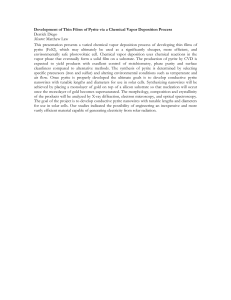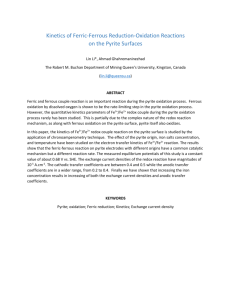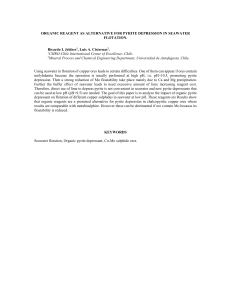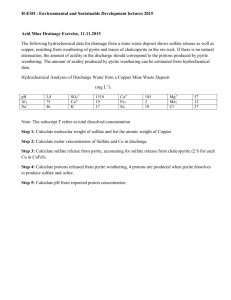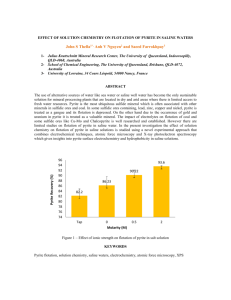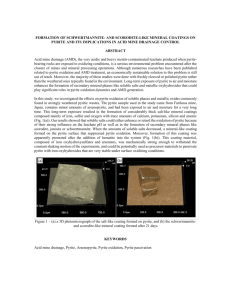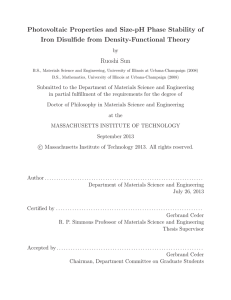Marcasite - Pyrite's Evil Twin Marcasite and pyrite are two common
advertisement
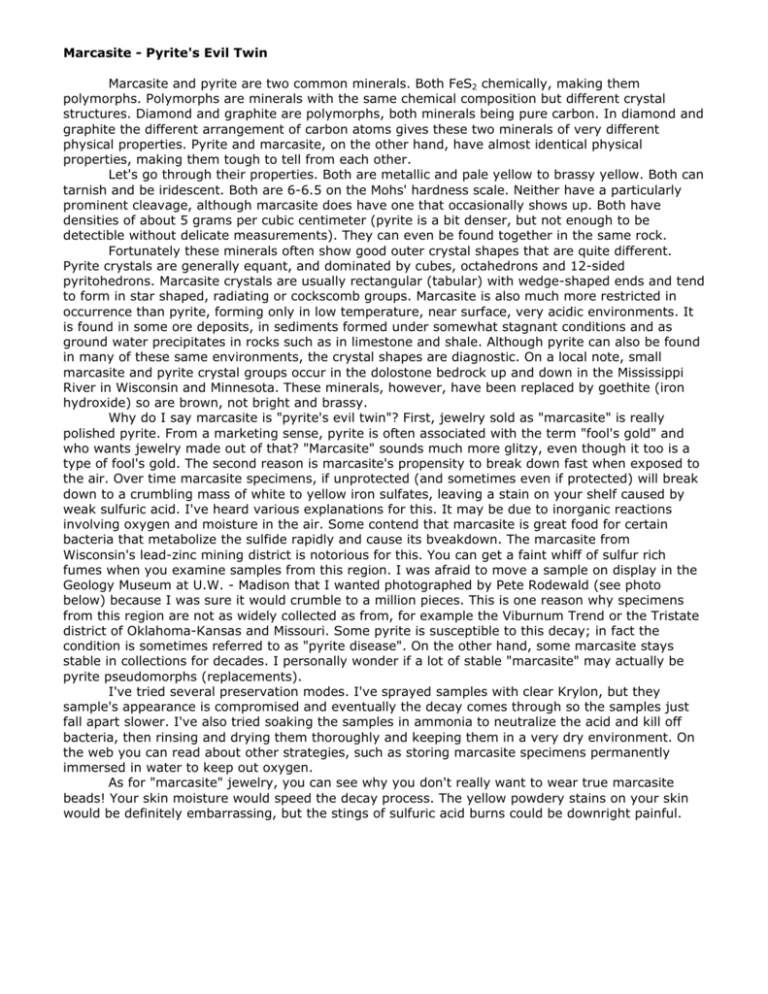
Marcasite - Pyrite's Evil Twin Marcasite and pyrite are two common minerals. Both FeS2 chemically, making them polymorphs. Polymorphs are minerals with the same chemical composition but different crystal structures. Diamond and graphite are polymorphs, both minerals being pure carbon. In diamond and graphite the different arrangement of carbon atoms gives these two minerals of very different physical properties. Pyrite and marcasite, on the other hand, have almost identical physical properties, making them tough to tell from each other. Let's go through their properties. Both are metallic and pale yellow to brassy yellow. Both can tarnish and be iridescent. Both are 6-6.5 on the Mohs' hardness scale. Neither have a particularly prominent cleavage, although marcasite does have one that occasionally shows up. Both have densities of about 5 grams per cubic centimeter (pyrite is a bit denser, but not enough to be detectible without delicate measurements). They can even be found together in the same rock. Fortunately these minerals often show good outer crystal shapes that are quite different. Pyrite crystals are generally equant, and dominated by cubes, octahedrons and 12-sided pyritohedrons. Marcasite crystals are usually rectangular (tabular) with wedge-shaped ends and tend to form in star shaped, radiating or cockscomb groups. Marcasite is also much more restricted in occurrence than pyrite, forming only in low temperature, near surface, very acidic environments. It is found in some ore deposits, in sediments formed under somewhat stagnant conditions and as ground water precipitates in rocks such as in limestone and shale. Although pyrite can also be found in many of these same environments, the crystal shapes are diagnostic. On a local note, small marcasite and pyrite crystal groups occur in the dolostone bedrock up and down in the Mississippi River in Wisconsin and Minnesota. These minerals, however, have been replaced by goethite (iron hydroxide) so are brown, not bright and brassy. Why do I say marcasite is "pyrite's evil twin"? First, jewelry sold as "marcasite" is really polished pyrite. From a marketing sense, pyrite is often associated with the term "fool's gold" and who wants jewelry made out of that? "Marcasite" sounds much more glitzy, even though it too is a type of fool's gold. The second reason is marcasite's propensity to break down fast when exposed to the air. Over time marcasite specimens, if unprotected (and sometimes even if protected) will break down to a crumbling mass of white to yellow iron sulfates, leaving a stain on your shelf caused by weak sulfuric acid. I've heard various explanations for this. It may be due to inorganic reactions involving oxygen and moisture in the air. Some contend that marcasite is great food for certain bacteria that metabolize the sulfide rapidly and cause its bveakdown. The marcasite from Wisconsin's lead-zinc mining district is notorious for this. You can get a faint whiff of sulfur rich fumes when you examine samples from this region. I was afraid to move a sample on display in the Geology Museum at U.W. - Madison that I wanted photographed by Pete Rodewald (see photo below) because I was sure it would crumble to a million pieces. This is one reason why specimens from this region are not as widely collected as from, for example the Viburnum Trend or the Tristate district of Oklahoma-Kansas and Missouri. Some pyrite is susceptible to this decay; in fact the condition is sometimes referred to as "pyrite disease". On the other hand, some marcasite stays stable in collections for decades. I personally wonder if a lot of stable "marcasite" may actually be pyrite pseudomorphs (replacements). I've tried several preservation modes. I've sprayed samples with clear Krylon, but they sample's appearance is compromised and eventually the decay comes through so the samples just fall apart slower. I've also tried soaking the samples in ammonia to neutralize the acid and kill off bacteria, then rinsing and drying them thoroughly and keeping them in a very dry environment. On the web you can read about other strategies, such as storing marcasite specimens permanently immersed in water to keep out oxygen. As for "marcasite" jewelry, you can see why you don't really want to wear true marcasite beads! Your skin moisture would speed the decay process. The yellow powdery stains on your skin would be definitely embarrassing, but the stings of sulfuric acid burns could be downright painful. -Dr. Bill Cordua, University of Wisconsin-River Falls
